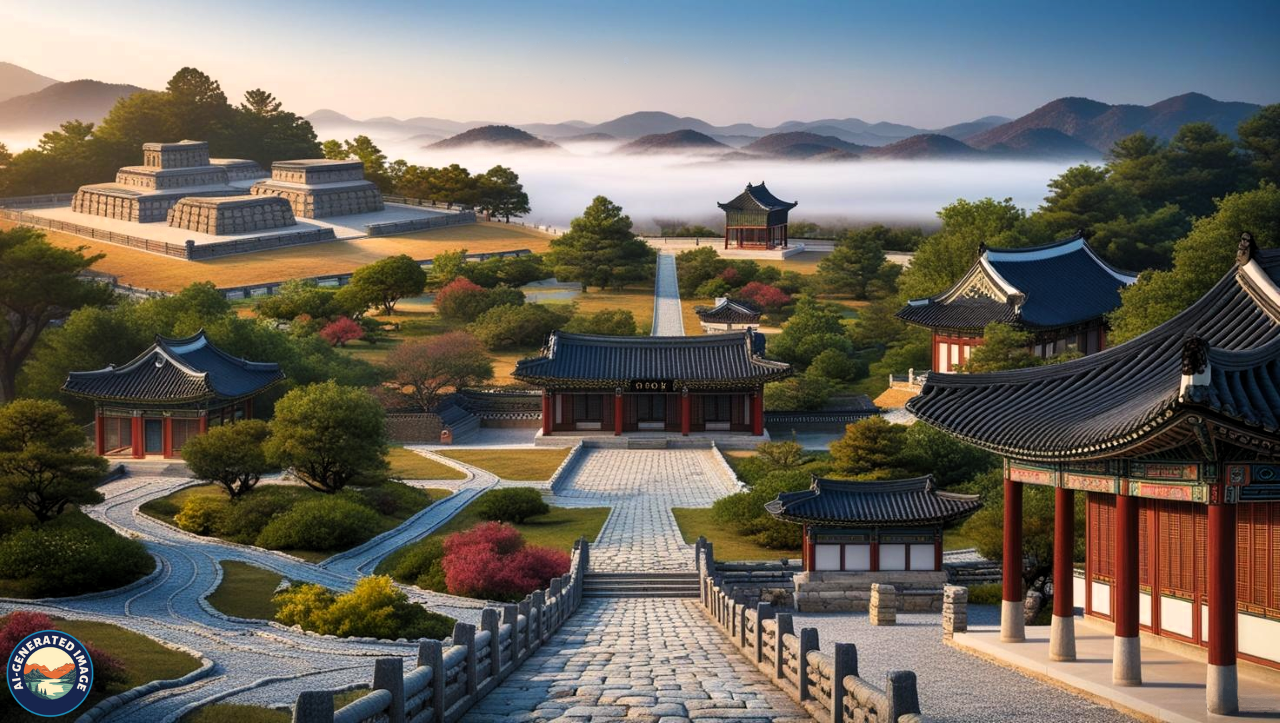Introduction
Once the magnificent capital of the Silla Kingdom, Gyeongju stands today as a remarkable open-air museum preserving centuries of Korean history. Located in South Korea’s southeast, this ancient city was a cultural and political epicenter for nearly a thousand years.
Often dubbed “the museum without walls,” Gyeongju hosts an unmatched collection of royal tombs, stone pagodas, Buddhist temples, and historic relics—many of which are UNESCO World Heritage Sites. Whether you’re a lover of history, architecture, or simply unique destinations, Gyeongju offers a soulful journey into Korea’s distant past.
Tracing the Legacy of the Silla Dynasty
Gyeongju’s historical significance originates from its role as the capital of the Silla Dynasty, which ruled from 57 BC to 935 AD. At its height, the Silla Kingdom unified much of the Korean Peninsula and transformed Gyeongju, then called Seorabeol, into a center of Buddhist learning and cultural refinement.
The city’s skyline during that era featured golden-roofed temples, royal academies, observatories, and monumental tombs. The spirit of this ancient grandeur still lingers in the landscape, visible through preserved artifacts, stone sculptures, and traditional architecture.
Thanks to its rich heritage, Gyeongju is now home to several UNESCO World Heritage Sites, offering travelers a chance to experience Korea’s ancient civilization firsthand.
Must-See Historical and Cultural Landmarks
Bulguksa Temple
A key symbol of Korea’s spiritual and artistic heritage, Bulguksa Temple showcases the architectural brilliance of the Silla era. Originally built in the 6th century and reconstructed in the 8th century, the temple reflects the harmonious design principles of Korean Buddhism.
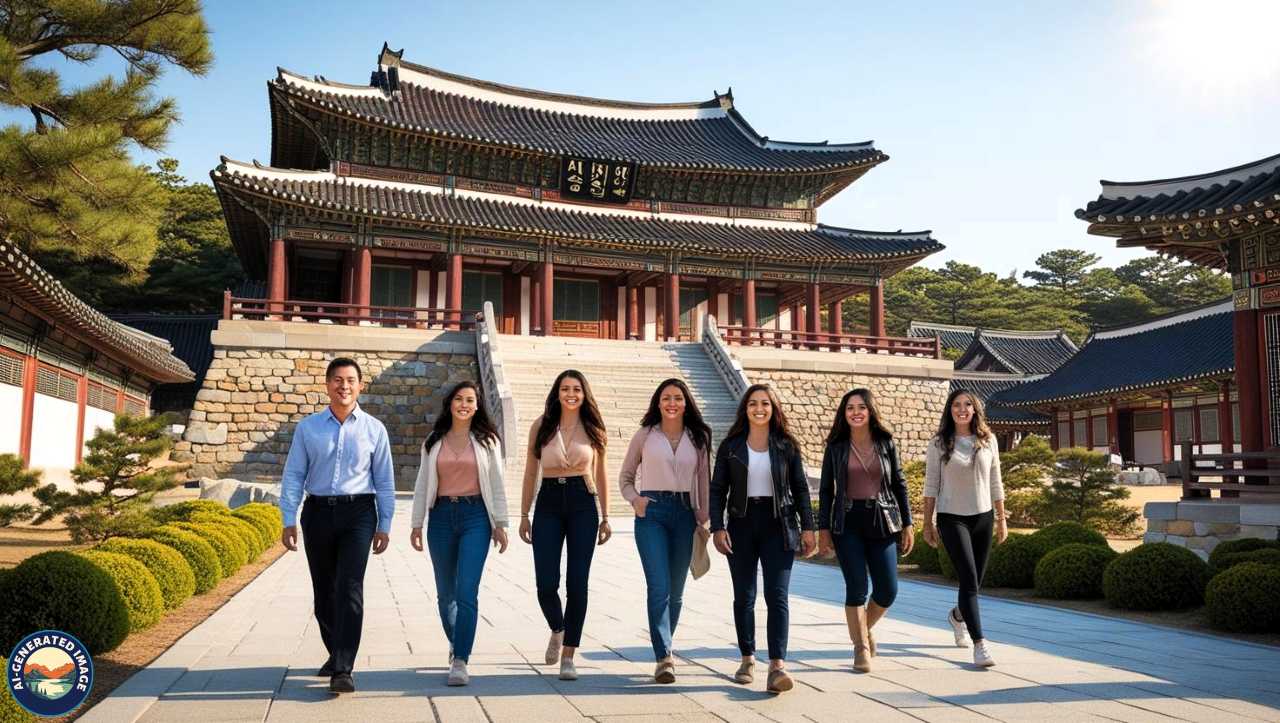
Its iconic twin pagodas—Dabotap and Seokgatap—represent the sophistication and balance found in Buddhist cosmology. The temple complex is adorned with elegant wooden pavilions, serene courtyards, and intricately designed staircases.
As both a functioning temple and a UNESCO World Heritage Site, Bulguksa offers visitors a peaceful and enriching experience.
Seokguram Grotto
Perched high on Mount Toham, the Seokguram Grotto is a serene sanctuary housing a magnificent granite statue of a seated Buddha. Built in the 8th century, it is considered one of East Asia’s most significant Buddhist artworks.
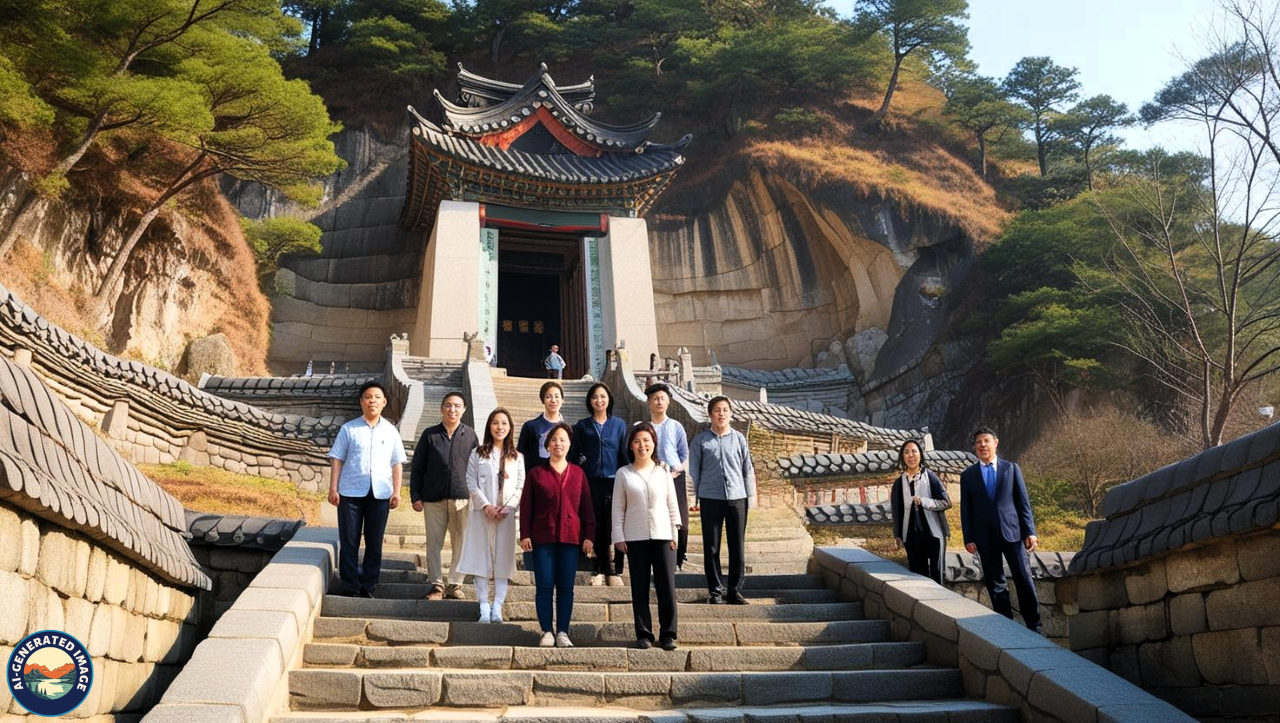
The central Buddha is surrounded by carved images of disciples and guardian deities, all housed within a perfectly engineered domed chamber. Designed to maintain a stable interior environment, the grotto is a marvel of ancient Korean craftsmanship.
Visiting at sunrise, when the Buddha faces the first light of day, adds a deeply spiritual dimension to the experience.
Daereungwon Tomb Park
The Daereungwon Tomb Complex consists of numerous grassy mounds that conceal royal tombs from the Silla period. These earth-covered structures offer a glimpse into the burial customs of ancient Korean royalty.
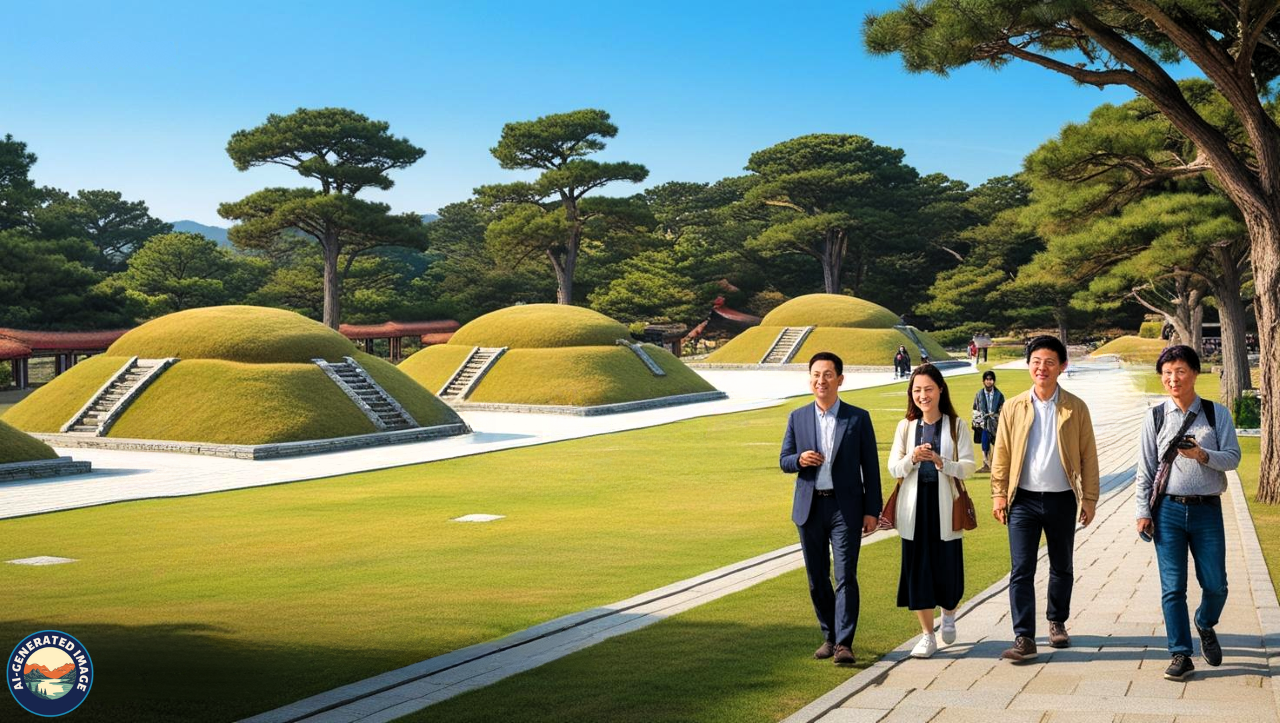
Among them, Cheonmachong—the “Heavenly Horse Tomb”—is open to the public. Inside, visitors can view a reconstructed wooden coffin and see replicas of gold crowns, jade ornaments, and pottery found in the tomb.
These tombs reveal the opulence of the Silla elite and provide a unique perspective on ancient cosmological beliefs and funerary practices.
Cheomseongdae Observatory
Constructed in the 7th century, Cheomseongdae is the oldest surviving astronomical observatory in East Asia. Built using 362 granite stones—believed to represent the lunar calendar—this structure exemplifies the scientific achievements of the Silla Kingdom.
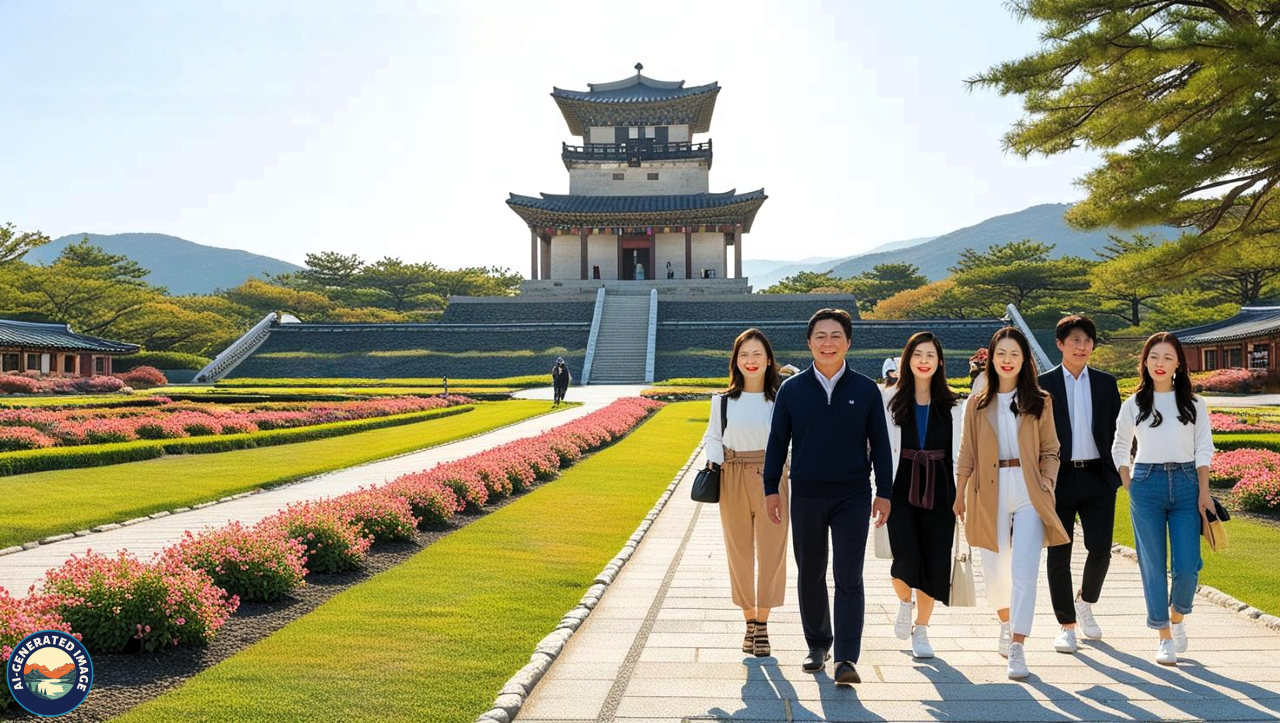
Though small in size, Cheomseongdae stands as a powerful symbol of Korea’s early astronomical knowledge. Surrounded by gardens, it is particularly picturesque at sunset or when illuminated at night.
Gyeongju National Museum
For a deeper understanding of Gyeongju’s past, a visit to the Gyeongju National Museum is essential. The museum houses thousands of artifacts excavated from local tombs, temples, and palaces.

Highlights include:
-
The Emille Bell, renowned for its size, deep tone, and mythical origin.
-
Exquisite golden crowns from royal burials.
-
Buddhist relics, ceramics, and tools illustrating daily life during the Silla period.
With multilingual displays and a well-organized layout, the museum is both educational and engaging.
Nature and Scenic Attractions
Bomun Lake
Located just outside the city center, Bomun Lake is a scenic spot surrounded by cherry trees, walking paths, and luxury resorts. In spring, the area becomes a pink-hued paradise thanks to its spectacular cherry blossom display.

Visitors can enjoy cycling, paddle boating, or lakeside picnics, making it a popular destination for both tourists and locals. Numerous hotels, cafes, and spas around the lake offer a relaxing atmosphere and stunning views.
Mount Namsan
Often referred to as the spiritual heart of Gyeongju, Mount Namsan is dotted with over 100 ancient Buddhas, pagodas, and temple ruins. It once served as a sacred mountain for meditation and pilgrimage during the Silla era.
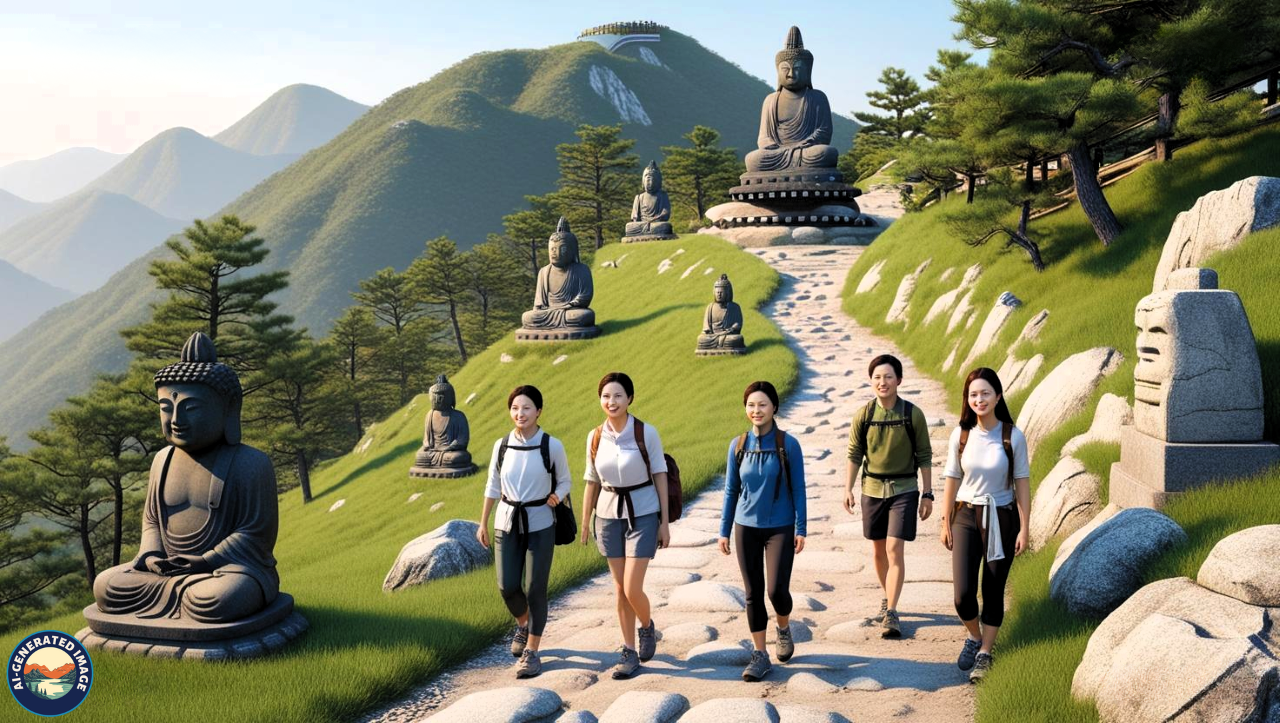
Hiking trails lead through pine forests, stone carvings, and scenic overlooks. Each route offers a mix of physical activity and cultural discovery, making Mount Namsan a rewarding destination for nature and history lovers alike.
Yangdong Folk Village
The Yangdong Folk Village, a UNESCO World Heritage Site, preserves the traditions and lifestyle of Korea’s Joseon-era nobility. Nestled in a picturesque valley, the village features well-preserved hanok (traditional homes) and Confucian shrines.

Many of the houses are still inhabited by descendants of noble families, and some operate as guesthouses. Visitors can stroll along stone alleys, enjoy local tea, and even participate in cultural programs that highlight Korea’s Confucian heritage.
Festivals and Seasonal Events
Gyeongju hosts a variety of vibrant festivals and events throughout the year that celebrate its rich history and natural beauty:
-
Gyeongju Cherry Blossom Marathon (April):
-
A popular race that winds around Bomun Lake, framed by thousands of blooming cherry trees.
-
Silla Cultural Festival (Autumn):
-
Includes historical reenactments, traditional games, music, and dance, honoring the legacy of the Silla Dynasty.
-
Lotus Lantern Festival (May):
-
Held during Buddha’s birthday, this festival features temples decorated with glowing lanterns and festive ceremonies.
These events offer travelers a chance to immerse themselves in Korean culture and community spirit.
Gyeongju’s Culinary Delights
Gyeongju’s cuisine reflects its cultural heritage and local ingredients. Here are a few must-try dishes:
-
Ssambap:
-
A meal where rice and grilled meat are wrapped in leafy vegetables and paired with assorted side dishes and sauces.
-
Hwangnam Bread:
-
A soft pastry filled with sweet red bean paste, created in Gyeongju and popular as a souvenir.
-
Boribap (Barley Rice):
-
A nutritious mix of barley, fresh vegetables, and spicy sauces.
Many restaurants serve these dishes in traditional hanok settings, enhancing the dining experience with ambiance and authenticity.
Transportation and Getting Around
Getting to Gyeongju
-
From Seoul:
-
The KTX high-speed train from Seoul Station to Singyeongju Station takes around two hours.
-
From Busan:
-
A short 30–40 minute train ride connects Busan to Gyeongju, making it ideal for a day trip.
-
Intercity Buses:
-
Available from cities such as Daegu, Pohang, and Ulsan with regular schedules.
Local Transportation
-
Walking or Bicycling:
-
Perfect for exploring central Gyeongju and major heritage sites.
-
Public Buses:
-
Budget-friendly and reliable, although a translation app may help navigate routes.
-
Taxis and Rentals:
-
Convenient for reaching remote attractions like Seokguram or Yangdong Village.
Accommodation Options
Hanok Guesthouses
Staying in a hanok allows visitors to experience traditional Korean living, complete with heated floors, sliding doors, and home-cooked meals.
Hotels and Resorts
Around Bomun Lake, there is a range of modern hotels offering spas, lake views, and international cuisine, suitable for families and couples.
Temple Stay Programs
Several temples near Gyeongju offer overnight stays where guests can join in meditation, tea ceremonies, and monastic meals—a perfect retreat for those seeking peace and reflection.
Side Trips and Nearby Spots
-
Woljeonggyo Bridge:
-
A reconstructed wooden bridge that glows beautifully when lit at night.
-
Poseokjeong Site:
-
The remains of a royal pavilion with a unique stone water channel, once used for poetic gatherings.
-
Oryu-dong Petroglyphs:
-
Ancient rock carvings date back to prehistoric times.
-
Pohang and Ulsan:
-
Nearby coastal cities offer scenic beaches, seafood, and cultural experiences.
Tips for First-Time Visitors
-
Best Seasons:
-
Visit during spring (March–April) or autumn (October–November) for mild weather and natural beauty.
-
Footwear:
-
Wear comfortable shoes, especially when exploring temple grounds and hiking trails.
-
Etiquette:
-
Remove shoes before entering homes or temples and show respect at religious sites.
-
Language Tools:
-
Apps like KakaoMap and Papago can greatly assist with navigation and communication.
Conclusion
Gyeongju is not just a historical city—it is a living narrative of Korea’s glorious past. From grand temples and royal tombs to peaceful lakes and mountain paths, every corner tells a story steeped in tradition and wonder.
Whether you are exploring ancient ruins, sampling traditional foods, or meditating in a temple, Gyeongju offers a journey that is as enriching as it is unforgettable.
FAQs
How many days should I spend in Gyeongju?
Two to three days are ideal to explore the main attractions at a relaxed pace.
Is Gyeongju family-friendly?
Absolutely! Its parks, museums, and scenic areas make it suitable for all ages.
Can I visit Gyeongju from Seoul in a day?
It’s possible, but staying overnight is recommended to enjoy the city fully.
What’s the best season to visit?
Spring and autumn offer the most beautiful scenery and comfortable weather.
Are English-speaking guides available?
Yes, especially at major sites. Booking in advance is recommended.
Is Gyeongju expensive to visit?
No. It is relatively affordable compared to Seoul or Busan, with many budget-friendly options.
Are credit cards accepted?
Yes, but carrying a small amount of cash is advisable for local shops or restaurants.

